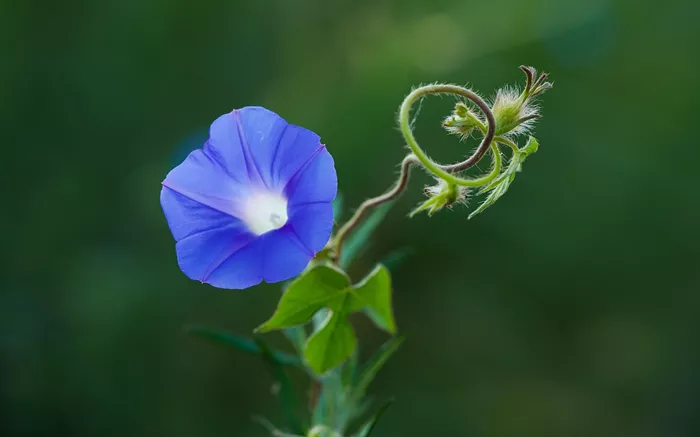Morning glories are one of the most beautiful and easy-to-grow flowers in any garden. Their vibrant colors and delicate trumpet-shaped blooms make them a favorite among gardeners. But when exactly do these lovely flowers bloom? Let’s dive into the world of morning glories and explore their blooming habits.
Introduction to Morning Glories
Morning glories, scientifically known as Ipomoea purpurea, are annual vines that belong to the Convolvulaceae family. They are native to Central and South America but have become popular worldwide for their stunning blooms and ease of cultivation. These flowers come in a variety of colors, including blue, pink, purple, red, and white, and are known for their heart-shaped leaves and tall stems.
Despite their name suggesting they bloom only in the morning, morning glories can actually bloom throughout the day and even into the evening. Their flowers typically open early in the morning and remain open until late afternoon or evening. However, some varieties may bloom at different times, depending on factors like sunlight and temperature.
Morning glories are also known for their rapid growth and ability to cover large areas quickly, making them perfect for trellises, arbors, or even containers. They are a great choice for gardeners looking to add a pop of color and texture to their outdoor spaces.
What Month Do Morning Glories Bloom?
Morning glories usually start blooming from early summer to the first frost of fall. In most regions, they are one of the last annuals to bloom, often in August or early September. The exact timing can vary based on factors such as climate, soil quality, and sunlight exposure.
Factors Affecting Blooming
Several factors can influence when morning glories bloom:
Temperature: Morning glories prefer warm temperatures between 60-85°F. Extreme temperatures can affect blooming. They thrive in warm weather and may not bloom well in cooler climates.
Soil Quality: They thrive in well-drained, poor or average soil. Rich soil can lead to lush foliage but fewer blooms. This is because morning glories tend to focus their energy on leaf growth when the soil is too fertile.
Sunlight: Full sun is essential for blooming. Shaded areas may not produce flowers. Morning glories need at least six hours of direct sunlight per day to bloom well.
Watering: Regular watering is necessary, but overwatering can reduce blooms. It’s important to keep the soil consistently moist but not soggy.
How to Encourage Blooming
To encourage morning glories to bloom, follow these tips:
Provide Support: Use a trellis or fence for the vines to climb. This will help them grow upright and produce more flowers.
Optimize Soil: Avoid fertilizing; instead, use well-drained soil. If your soil is too rich, consider mixing in some compost or sand to improve drainage.
Ensure Sunlight: Plant in areas with full sun. If you have a shaded garden, consider using grow lights to supplement natural sunlight.
Water Wisely: Water deeply once a week to prevent root rot. Check the soil moisture by inserting your finger into the soil up to the first knuckle. If the soil feels dry, it’s time to water.
Growing Morning Glories from Seed
Growing morning glories from seed is relatively easy and rewarding. Here are some steps to follow:
Sow Seeds: Plant seeds about ¼ inch deep and 6-8 inches apart in late spring or early summer, after the last frost.
Provide Warmth: Keep the soil warm until germination, which usually takes about 7-10 days.
Maintain Moisture: Keep the soil consistently moist during the germination period.
Transplant: Once seedlings have two sets of leaves, you can transplant them to larger containers or directly into the garden.
Varieties of Morning Glories
There are several varieties of morning glories, each with unique characteristics:
Ipomoea purpurea: This is the most common variety, known for its purple flowers.
Ipomoea nil: Often referred to as Japanese morning glory, it comes in a range of colors including blue, pink, and white.
Ipomoea tricolor: Known for its tri-colored flowers, this variety adds a unique touch to gardens.
FAQs
Do Morning Glories Only Bloom in the Morning?
No, while they typically open early in the morning, they can remain open until late afternoon or evening. Some varieties may even bloom at night.
How Long Does It Take for Morning Glories to Bloom?
From seed to bloom, morning glories can take about 120 days. They are one of the last annuals to bloom in most regions.
Why Are My Morning Glories Not Blooming?
Common reasons include too fertile soil, insufficient sunlight, or overwatering. Check your growing conditions and adjust accordingly.
Can I Grow Morning Glories in Shaded Areas?
Morning glories require full sun to bloom. If planted in shade, they may not produce flowers. Consider relocating them to a sunnier spot.
Additional Tips for Gardeners
Deadheading: While morning glories self-seed, removing spent flowers can encourage more blooms.
Pest Control: Keep an eye out for pests like aphids and whiteflies, which can harm the plants.
Companion Planting: Morning glories pair well with other annuals like marigolds and zinnias for a colorful garden display.
In conclusion, morning glories are a delightful addition to any garden, offering vibrant blooms from early summer to fall. By understanding their blooming habits and optimizing growing conditions, gardeners can enjoy these beautiful flowers throughout the growing season. Whether you’re a seasoned gardener or just starting out, morning glories are sure to captivate with their beauty and charm. With their ease of growth and stunning display, they are a must-have for anyone looking to add a touch of elegance and vibrancy to their outdoor spaces.


